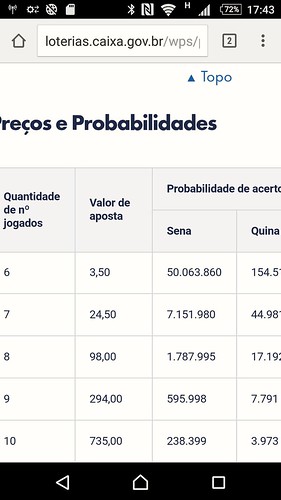We shall see other comparable features among these two intermediates. In IS308, it need to be emphasized that none of the hydrogen bonds Ile56-NH1 and Tyr82-Og two are fashioned. For these two bonds, the average distances between O1 and O2 and the hydrogen atom are two.seventy eight + .34 A and two.52 , and the regular hydrogen bond angles are 123 + 12 and 140 + forty + 1.thirteen A respectively. Consequently, Ile56-N one should be seen as a everlasting van der Waals make contact with and Tyr82-Og 2 as a transient van der Waals contact. This outcome is also related in IS8: 8-O2 makes a van der Waals contact with Ile56 and 8-O3 a transient make contact with with Tyr82 [thirteen]. Because the two hydrogen bonds are not yet formed in IS8 or IS308 with the residues Ile56 and Tyr82, their development would hence represent a significant enthalpic driving drive in going from the intermediate condition to the complexed condition. The RMSFs of the atoms of the protein residues that are concerned in most of the contacts with the ligand ended up calculated for IS308, for CS308, and for the unbound protein (Fig. 5). Those of the ligand in IS308, CS308, and the free state have been also calculated and are described in the inset of Fig. five. The comparison of the RMSFs of the ligand among the a few states suggests that the largest differences are .5 A, calculated for the extremities C23 and C32 between the totally free point out and IS308. The RMSFs of the peripheral moieties iBu, Tol, and Ethe in IS308 are marginally reduce than in CS308 these modest differences (v0:5) need to be ascribed to the numerous transient intra- and intermolecular contacts monitored for these moieties in IS308, as noticed beneath, and that reasonably decrease their mobility. In buy to quantify all the transient  interactions among protein and ligand groups of atoms, we established, by TAK-875 making use of a 4-A cutoff, the contacts among each pair of interacting teams of atoms that is composed of a ligand moiety and a residue. From these typical overall counts, the number of transient interactions formed in between a ligand moiety and a residue of FKBP12 can then be obtained by subtracting the connected permanent interactions (if any and as outlined in the starting of this subsection). A schematic representation of the principal interactions are also presented in Fig. 6b exactly where the seven long term interactions, mostly of type CH, with the residues fifty four, fifty five, fifty six, 82, and 90 are documented. We can as a result see that all the ligand moieties are included in many transient contacts however, since their lifetime is, on typical, on the get of tens of picoseconds, this results in average interatomic distances that are, most usually, above 4 A and in regular deviations (S6 Table). above .5 A Apart from the permanent contacts that the atoms O1 and O5 of the main moiety make, these two atoms also take part in transient contacts: O1 tends to make one transient CH get in touch with with every of the 25017033residue Val55, Ile56, and Tyr82 (for clarity,
interactions among protein and ligand groups of atoms, we established, by TAK-875 making use of a 4-A cutoff, the contacts among each pair of interacting teams of atoms that is composed of a ligand moiety and a residue. From these typical overall counts, the number of transient interactions formed in between a ligand moiety and a residue of FKBP12 can then be obtained by subtracting the connected permanent interactions (if any and as outlined in the starting of this subsection). A schematic representation of the principal interactions are also presented in Fig. 6b exactly where the seven long term interactions, mostly of type CH, with the residues fifty four, fifty five, fifty six, 82, and 90 are documented. We can as a result see that all the ligand moieties are included in many transient contacts however, since their lifetime is, on typical, on the get of tens of picoseconds, this results in average interatomic distances that are, most usually, above 4 A and in regular deviations (S6 Table). above .5 A Apart from the permanent contacts that the atoms O1 and O5 of the main moiety make, these two atoms also take part in transient contacts: O1 tends to make one transient CH get in touch with with every of the 25017033residue Val55, Ile56, and Tyr82 (for clarity,
RMSFs derived for the binding intermediate. RMSFs calculated for the main residues 536, 82, 87, and ninety that are in get in touch with with the ligand in IS308 the corresponding values for the bound point out (CS308) are also reported for comparison. The RMSFs for the ligand atoms in IS308 and the certain point out are revealed in the inset. For functions of comparison, the RMSFs of these 7 residues in the totally free protein and people of the totally free ligand (inset) had been also calculated by averaging more than four 2-ns and eight 250-ps SBD simulations, respectively. Fig. 6b see also the legend of this figure) O5 can make 3 transient contacts with His87 (observed in Fig. 6b as a few CH contacts amongst His87 and the SO2 team). It is also noteworthy in Fig. 6a that Ethe and Tol participate in a number of transient contacts. In Fig. 6b, a single can see that Tol can make twelve contacts with Tyr82 and His87 whilst, despite its tiny dimensions, Ethe helps make ten contacts of various types with Gln53, Val55, Ile56, and Tyr82. The transient mother nature of these contacts final results from the versatility of these peripheral moieties.
